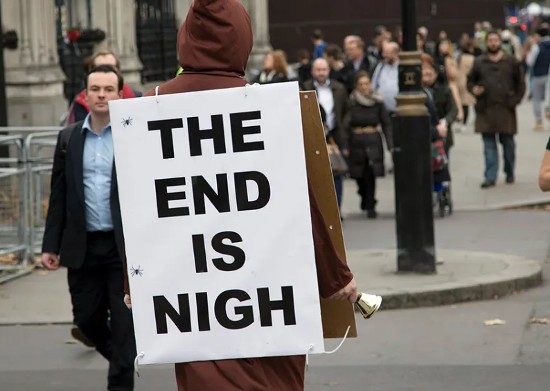We are living in an anti-depressant age. The Internet and social media, the technologies that were supposedly going to eliminate borders, and create a global community mindset, instead have made us more self-absorbed, isolated, and depressed. Add the COVID-19 pandemic and the enforced isolation that led much of the planet to cocoon for months on end, then climate change and the stress it is creating for young people and a picture emerges of humanity in a permanent state of depression.
A recent Euronews article states, “The world is grappling with a mental health crisis.” The first two decades of the 21st century have seen a dramatic increase in the use of antidepressant drugs. Between 2000 and 2020 in 18 European countries, usage has grown by 250%. Even in countries reported to be the happiest nations on the planet, the latest being Finland, antidepressant usage is dramatically on the rise.
And Europe is far from alone. Almost every country on the planet (the exception may be Bhutan) is seeing a rise in the use of antidepressants.
Are there good reasons for this evergrowing state of mind that suggests chronic depression is a fixture of 21st-century society? Anxiety has been doubling in the global population as the century unfolds. What are the triggers?
- the COVID-19 pandemic and diseases like it spreading around the world
- job insecurity for the precariat (those experiencing precarious employment)
- the perils of climate change
- the spectre of the wars being fought today escalating to become a global conflict
- the rise of sentient artificial intelligence
- fear that a space rock could crash into the planet and wipe us out
We are living with scenarios like the one that the Bulletin of Atomic Scientists tracks with its Doomsday Clock getting closer and closer to the midnight hour. The Doomsday Clock was created by the University of Chicago scientists involved in the Manhattan Project responsible for the development of the atomic bomb. These scientists meant it to symbolize how close humanity is to destroying the planet using the tools and technology of our civilization. It is metaphorical, not real. But for some, the Doomsday Clock is just that, marking the minutes and seconds until humanity is wiped out.
There have been many predictions of the planet’s demise. Back in 2012, it was supposed to happen on the winter solstice day, December 21st, when the galactic plane was to align with the Sun and Earth at the moment a space rock the size of a planet was scheduled to smash into us.
Death-wish mentality appears to be a phenomenon linked to human experiences for centuries. Psychologists believe this is unique to humans among the animals on the planet because we are aware of future death and have embedded rituals and rationales to justify our mortality.
The Zoroastrian faith which emerged in Persia in the 6th century BCE, described a future apocalyptic event. Judao-Christian tradition in the Book of Daniel from the Old Testament appears to have borrowed this idea in predicting a coming apocalypse. The Book of Revelations in the New Testament is a narration focused on the end of humanity on Earth.
In medieval times, Christian leaders accepted the idea of a millennial apocalypse believing that 1,000 CE was the date when Jesus Christ would return to mark the end. The Second Coming didn’t happen then and hasn’t happened since although there have been umpteen predictions of it over the centuries.
The Doomsday phobia transcends religion today to embrace technology. Some good examples include the 1938 radio broadcast of a play based on H. G. Wells’ War of the Worlds which caused millions listening to believe the alien invasion had begun and we were about to be wiped out. The invention of the atomic bomb led to nucleomituphobia, a fear of nuclear war. In the year 2000, a variation on messianic religious millennium thinking occurred with the Y2K crisis which was supposed to mark the collapse of civilization as world computers stopped working because of a two-digit rather than four-digit date field. When the atom-smashing CERN project began operating in 2008, doomsdayers predicted a black hole would open up and swallow Earth. Even the renowned Scripps Institute of Oceanography in 2017 predicted extinction for humanity, giving us a 5% chance of making it to the end of the 21st century because of anthropogenic climate change.
Today, we have a billionaire Doomsdayer, Elon Musk, who launched his commercial rocket business based on a doomsday assumption that at some point in the future, life on Earth would be wiped out by a cataclysmic event. That is the rationale for SpaceX’s existence and why Musk wants to establish a city of one million survivors on Mars.
Is there a cure for those consumed by the doomsday mindset, for the growing number of those experiencing depression and anxiety in the 21st century? Yes. There are things we can control, and there are things we cannot. And some of the things we think we can’t do, we probably can in the future through technological innovation.
Here are some examples:
- We can mitigate climate change by reducing and eventually eliminating the burning of fossil fuels for energy and transportation. We have nascent and established technologies that can make this happen.
- We have new medical technologies to help us identify and defeat future pandemics. mRNA, CRISPR and stem cells are changing medicine in ways we have yet to comprehend.
- We can put guardrails on artificial intelligence to ensure even if it becomes self-aware it won’t destroy its creator.
- We can create paths to secure employment for the precariat through job training, lifelong learning and a reformed educational system, and through government initiatives such as guaranteed basic income.
- And as NASA demonstrated with the recent DART mission, we can build a space defence system to redirect space rocks bound for Earth.
Instead of taking anti-depressants to deal with our anxiety triggers which appears to be a growing global mental health and addiction problem, we can use non-drug means to deal with our fears. Cognitive-behavioural therapy can desensitize fears, both rational and irrational. Yoga and other exercise programs, as well, can also help dissipate depression and doomsday thoughts.









